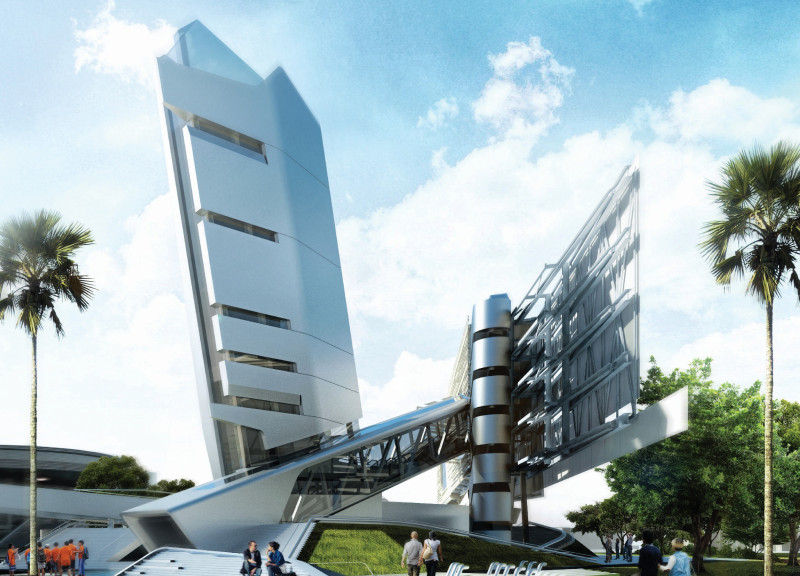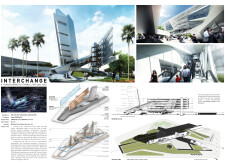5 key facts about this project
### Project Overview
Located at 400 South Lanza Street in San Jose, California, Interchange encompasses both interior and exterior spaces totaling 8,070 square meters. The design team, consisting of Ilke Iliev, Chris Donatello, and Anthony Mull, has created a structure that aims to embody the interconnectedness of contemporary urban life, particularly within the context of San Jose's vibrant technological landscape.
### Aesthetic and Spatial Strategy
Interchange features a unique angular form that conveys movement and dynamism, reflecting the innovative spirit of Silicon Valley. The design integrates sharply inclined planes that enhance visual interest and suggest fluidity. The project incorporates significant architectural elements, including a prominent vertical tower that symbolizes connectivity and offers panoramic views of the surroundings. Tube and bridge structures within the design serve as both pedestrian pathways and aesthetic components, facilitating movement throughout the building and contributing to its overall narrative.
### Materiality and Sustainability
The selection of materials is a key aspect of the project's identity. Reinforced concrete provides the structural framework for the building, while floor-to-ceiling glass enhances natural light access and visual connections to the environment. Aluminum panels lend a contemporary aesthetic, and the incorporation of recycled wood in select interior spaces adds warmth and comfort to the design. The landscaping surrounding the structure features native plant species that minimize water use and promote biodiversity, underscoring the project's commitment to sustainable practices.
### Community Engagement and Interior Layout
The interior layout focuses on fostering community interaction through multi-functional spaces suitable for various activities, from exhibitions to social gatherings. Open areas are prioritized, enabling free movement and encouraging occupants to engage with one another. Innovative vertical circulation elements, such as escalators and staircases, enhance connectivity between levels, making the building a central hub for social engagement. By situating itself at a major transit junction, Interchange improves accessibility and supports economic activity in the region, reinforcing its role as a vital communal asset within San Jose's urban fabric.


















































